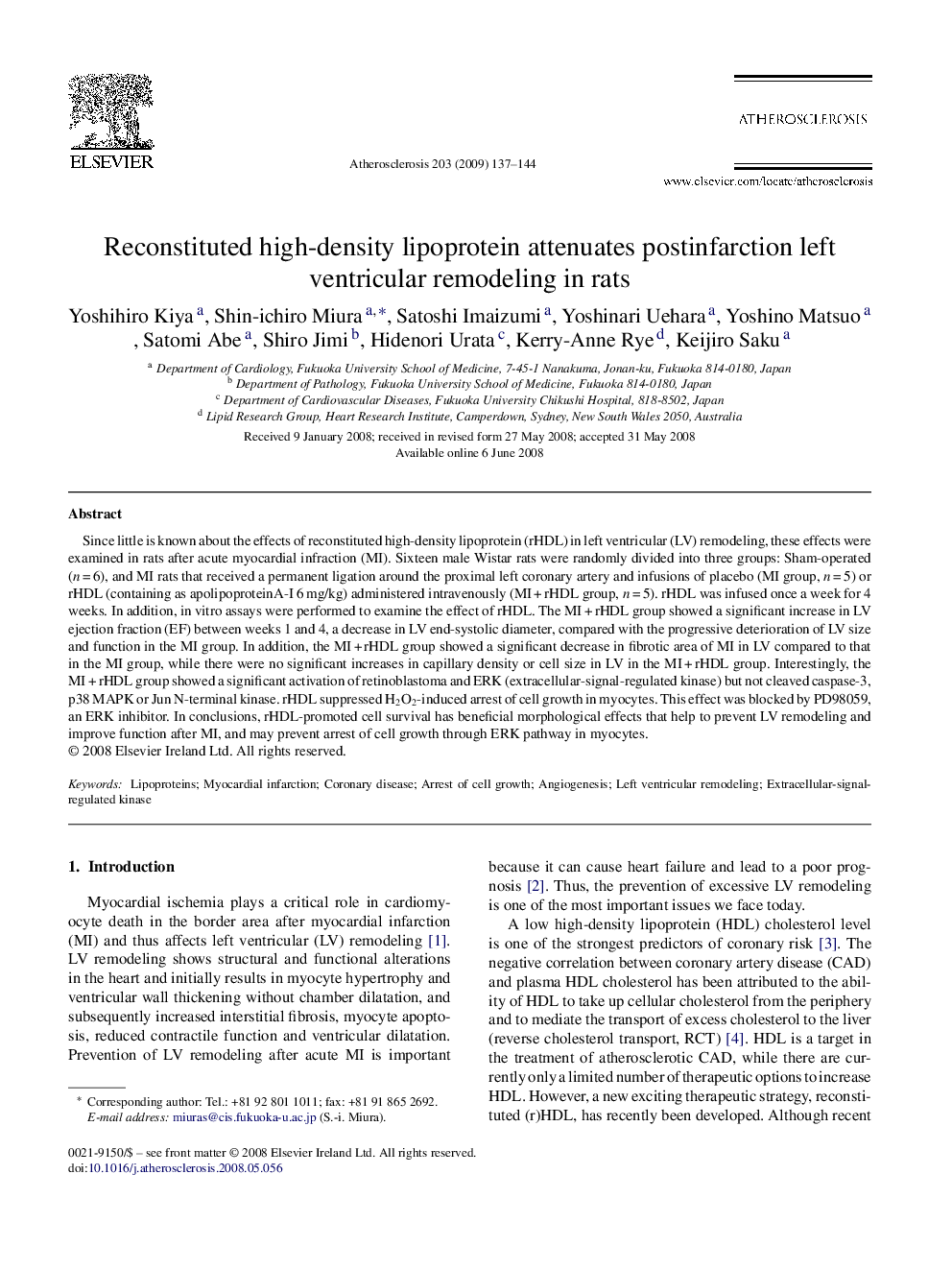| Article ID | Journal | Published Year | Pages | File Type |
|---|---|---|---|---|
| 5951514 | Atherosclerosis | 2009 | 8 Pages |
Abstract
Since little is known about the effects of reconstituted high-density lipoprotein (rHDL) in left ventricular (LV) remodeling, these effects were examined in rats after acute myocardial infraction (MI). Sixteen male Wistar rats were randomly divided into three groups: Sham-operated (n = 6), and MI rats that received a permanent ligation around the proximal left coronary artery and infusions of placebo (MI group, n = 5) or rHDL (containing as apolipoproteinA-I 6 mg/kg) administered intravenously (MI + rHDL group, n = 5). rHDL was infused once a week for 4 weeks. In addition, in vitro assays were performed to examine the effect of rHDL. The MI + rHDL group showed a significant increase in LV ejection fraction (EF) between weeks 1 and 4, a decrease in LV end-systolic diameter, compared with the progressive deterioration of LV size and function in the MI group. In addition, the MI + rHDL group showed a significant decrease in fibrotic area of MI in LV compared to that in the MI group, while there were no significant increases in capillary density or cell size in LV in the MI + rHDL group. Interestingly, the MI + rHDL group showed a significant activation of retinoblastoma and ERK (extracellular-signal-regulated kinase) but not cleaved caspase-3, p38 MAPK or Jun N-terminal kinase. rHDL suppressed H2O2-induced arrest of cell growth in myocytes. This effect was blocked by PD98059, an ERK inhibitor. In conclusions, rHDL-promoted cell survival has beneficial morphological effects that help to prevent LV remodeling and improve function after MI, and may prevent arrest of cell growth through ERK pathway in myocytes.
Keywords
Related Topics
Health Sciences
Medicine and Dentistry
Cardiology and Cardiovascular Medicine
Authors
Yoshihiro Kiya, Shin-ichiro Miura, Satoshi Imaizumi, Yoshinari Uehara, Yoshino Matsuo, Satomi Abe, Shiro Jimi, Hidenori Urata, Kerry-Anne Rye, Keijiro Saku,
